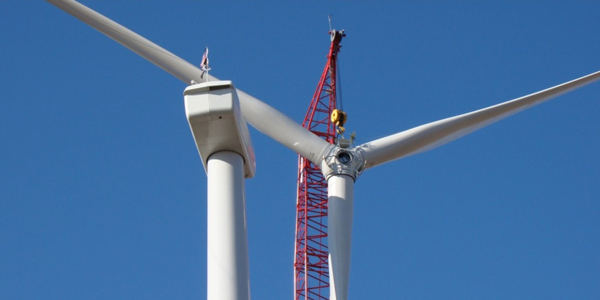By Amanda Durish Cook
FERC last week ordered settlement procedures over Pioneer Trail Wind Farm’s request to recover $826,926 annually to provide reactive supply and voltage control in MISO.
The commission said the amount requested by the 150-MW Illinois wind project could be unjust and unreasonable but allowed the rate schedule to go into effect July 1 subject to refund (ER18-1473).
“Pioneer Trail appears to have incorporated costs that may be unrelated to the provision of reactive service, including portions of ‘Turbine Generator Erection,’ ‘Turbine Generator Options’ and ‘[Supervisory Control and Data Acquisition System]’ costs in its accessory electric equipment cost category,” FERC explained.
Pioneer Trail, owned by E.ON Climate & Renewables North America, said it followed the reactive power rate methodology approved by FERC in 1999 for American Electric Power. The facility’s generation interconnection agreement with Ameren Illinois stipulates that it must provide reactive service, but Pioneer Trail claims it has been providing reactive power support to MISO without compensation since beginning commercial operation in 2012. It said it meets MISO testing requirements for voltage control capability because its turbines contain a power electronics system that regulates voltage and power in real time, allowing them to perform like a conventional synchronous generator.
“Pioneer Trail notes that there are differences in the types and quantities of equipment providing reactive power support between synchronous and non-synchronous generators, such as a wind turbine generator, but argues that, in both types of facilities, the costs of the generators/exciters, [generator step-up] transformers and accessory electric equipment can be separated from the remaining plant investment, and the portion of those costs attributable to the production of reactive power can be determined by applying an allocation factor,” FERC said.
Pioneer Trail pointed out that FERC has accepted reactive service rate schedules “for several similar non-synchronous wind generation facilities,” including three in the MISO footprint. The wind farm also acknowledged that its turbines will have a higher reactive power revenue requirement than traditional synchronous generators because there’s more equipment involved.
Ameren challenged Pioneer Trail’s revenue requirement filing, saying the calculation includes several errors and “over $19 million of indirect costs that are largely unexplained,” including about $13 million of network upgrade costs that “are not properly included in the calculation of reactive power rates.” Ameren also said Pioneer Trail’s calculation does not use FERC’s Uniform System of Accounts and contended the wind farm erred in only using 2017 operations and maintenance costs, instead of multiple years.





